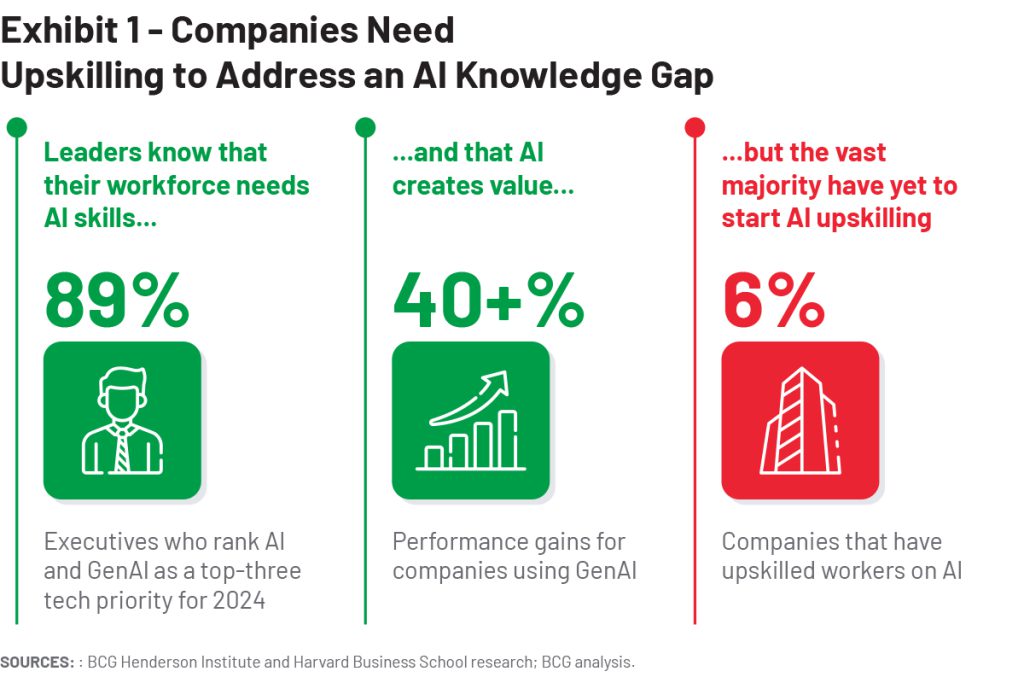Upskilling the organisation is not just a nice-to-have, especially with the advent of AI. But where oh where does one begin the change journey?
Words by Karan Karayi
Change is playing out a dizzying pace, with the introduction of artificial intelligence (AI) and generative AI (GenAI) has fundamentally transformed the way businesses operate.
As organizations scramble to adapt, it’s clear that upskilling the workforce is not just a nice-to-have; it’s essential for survival. But how do companies effectively implement AI upskilling?
Assessing Needs, Establishing Goalposts
Before embarking on an upskilling journey, organizations must first evaluate their current capabilities. This means taking a hard look at what skills are lacking and what roles will be impacted by AI technologies. It’s akin to a doctor diagnosing a patient before prescribing treatment.

Conduct surveys or interviews to pinpoint where employees feel less confident in their AI-related knowledge. Equally, it is critical to establish clear goals for what the organisation hopes to achieve through upskilling. Are you looking to improve productivity, enhance customer experience, or drive innovation? Knowing where you need to head will inform the actions you take, and how you assess them.
Tailoring Training Programs
Once you’ve assessed the landscape, the next step is to customise training programs that align with the identified needs. Different roles require different skills. For instance, a data analyst will need different training compared to a marketing manager.
Don’t reinvent the wheel either. Leverage any existing training materials or platforms that can be adapted for AI upskilling.
Preparing Employees for Change
Change can be intimidating, especially when it involves new technologies like AI. To ease this transition, organisations should cultivate a culture that embraces learning and adaptation. Host regular workshops where employees can learn about AI in a relaxed environment. Think of it as a book club, but instead of discussing the latest bestseller, you’re diving into the world of AI.
Communicating the Vision
It’s vital that employees understand why AI upskilling is essential. Clear communication can help alleviate fears and resistance, which is why you should highlight examples of how AI has positively impacted the organization or industry. Real-life stories can be incredibly motivating. At the same time, make it a two-way discussion; establish channels where employees can voice their concerns or suggestions regarding the upskilling process.
Engaging the C-Suite
For an AI upskilling initiative to succeed, it must have the backing of the organization’s leadership. When executives are visibly committed to the cause, it sends a strong message throughout the organization, denoting that it is not merely lip service, but a serious endeavour being undertaken and a priority at all levels. This is why C-suite executives should participate in training sessions alongside their teams, and be assigned specific responsibilities to ensure accountability and a structured approach.
Creating a Culture of Continuous Learning
To gauge the effectiveness of the AI upskilling initiative, organisations must establish clear metrics for success, with skills measured through assessment. Post-program, the business impact can be analysed by seeing how the newly acquired skills have positively influenced business outcomes, such as productivity or customer satisfaction.

AI upskilling can’t be a one-time event; it requires ongoing refinement. For organisations to remain competitive, they must foster a culture that values continuous learning, with clear pathways for employees to continue their education in AI and related fields.
In essence, effective AI upskilling requires a multifaceted approach that includes assessing organizational needs, preparing employees for change, clearly articulating the vision, engaging leadership, and creating a culture of continuous learning. By implementing these five distinct actions, organisations can not only enhance their workforce’s capabilities but also ensure long-term success in an increasingly AI-driven world.


